Timeless




Senza tempo, eterno, Timeless è un nome che racchiude in sé le caratteristiche prevalenti di questa collezione dall’estetica delicata e discreta, che trascende i tempi e le mode. Dalla tradizione di Casalgrande Padana la storica tecnologia della ceramica a tutta massa, assolutamente non smaltata, si affina e si evolve per restituire nuove superfici incredibilmente resistenti e durature.
The features of this new collection are reflected in its name, Timeless: beautiful tiles that go beyond time and trends. Casalgrande Padana has finetuned its unglazed full-body ceramic tile technology to create new, hardwearing, long-lasting surfaces.
Intemporel et éternel : Timeless est un nom qui résume les caractéristiques dominantes de cette collection à l’esthétique délicate et discrète qui transcende les époques et les modes. La technologie traditionnelle de la céramique pleine masse de Casalgrande Padana, non émaillée, s’affine et évolue pour offrir de nouvelles surfaces incroyablement résistantes et solides.
Timeless – zeitlos und unvergänglich – ist ein Name, der die wesentlichen Merkmale dieser Kollektion mit ihrer zarten und zurückhaltenden Ästhetik, die Zeiten und Moden überdauert, auf den Punkt bringt. Ausgehend von Casalgrande Padanas langjähriger Geschichte wird die traditionelle Technik der Vollkeramik, die absolut unglasiert ist, verfeinert und weiterentwickelt, um neue ungeheuer widerstandsfähige und langlebige Oberflächen zu schaffen.
Beautiful tiles with soft colours, light textures, and superior technical features._Des tonalités sobres et des textures légères pour des revêtements qui allient la beauté à d’excellentes performances techniques._Zurückhaltende Farbtöne und leichte Texturen für Verkleidungen, die Schönheit mit erstklassigen technischen Merkmalen verbinden.
sobrie e texture leggere per rivestimenti che coniugano bellezza e prestazioni tecniche superiori.

Three finishes emphasise the texture of Timeless full-body porcelain stoneware tiles, creating visual continuity inside and out. _Trois finitions expriment l’intensité de la matière de Timeless, un grès cérame pleine masse pour des projets intérieurs et extérieurs coordonnés._Drei Oberflächenausführungen erzählen von der intensiven Materialität von Timeless, einem Feinsteinzeug in Vollkeramik für koordinierte in&out-Projekte.

Tre finiture raccontano l’intensa matericità di Timeless, un gres porcellanato a tutta massa per progetti coordinati in&out.Naturale Matt Naturelle Matt Levigata

Timeless è un gres porcellanato ecosostenibile, completamente riciclabile, ignifugo, ingelivo, resistente alla flessione e a qualsiasi condizione climatica, con alte prestazioni di durata nel tempo sia a livello di carico e deformazione, sia di tenuta cromatica. La superficie non trattiene sporco e batteri ed è quindi anallergica e inodore oltre che estremamente facile da pulire. A Timeless può essere applicato il trattamento Bios Antibacterial® in grado di eliminare al 99% i quattro principali ceppi batterici presenti sulla superficie ceramica con un’azione sempre attiva sia con luce che al buio. Il trattamento Bios Self-Cleaning® è invece ideale nel caso di impiego come rivestimento esterno di facciata. In presenza di luce solare questo trattamento attiva una reazione in grado di abbattere non solo i batteri, ma soprattutto gli inquinanti presenti nell’aria e decomporre lo sporco che si deposita sulla superficie delle piastrelle, in modo che possa essere rimosso dallo scorrere dell’acqua piovana, grazie alla superidrofilia della superficie ceramica.
Timeless porcelain stoneware is environmentally sustainable, fully recyclable, fire-resistant, non-allergenic and frost-resistant. It has excellent bending strength and stands up to any kind of weather conditions, and its excellent load and warpage resistance and colour fastness remain unaltered over time. The surface is non-allergenic and odourless, because it does not gather dirt and bacteria, and is easy to clean. Timeless tiles can be enhanced with Bios Antibacterial® treatment, able to eliminate 99% of the four main strains of bacteria. When used as a covering for outdoor walls, the Bios Self-Cleaning® treatment activates a reaction in the presence of sunlight that is able to remove not only bacteria, but above all the pollutants present in the air, as well as breaking down the dirt that settles on the surface of the tiles so that it can be washed away by rainwater, thanks to the super hydrophilicity of the ceramic surface.
Timeless est un grès cérame écodurable, entièrement recyclable, ignifuge, anallergique, inaltérable au fil du temps, ingélif, résistant à la flexion et à toute condition climatique, hautement performant en matière de longévité liée aussi bien aux charges et à la déformation, qu’à la conservation des couleurs. Facile à nettoyer, la surface est anallergique et inodore car elle ne retient ni la saleté ni les bactéries. Il est possible d’appliquer à Timeless le traitement Bios Antibacterial® capable d’éliminer à 99 % les quatre principales souches bactériennes et, en cas d’utilisation comme revêtement de façade, le traitement Bios Self-Cleaning® : en présence de rayonnement solaire, une réaction se déclenche, capable d’éliminer non seulement les bactéries mais aussi et surtout les polluants présents dans l’air, de décomposer les saletés qui se déposent sur la surface des dalles et de les éliminer grâce à l’eau de pluie et aux propriétés superhydrophiles de la surface céramique.
Timeless ist ein ökologisch nachhaltiges Feinsteinzeug, das vollständig recycelbar, feuerfest, hypoallergen, dauerhaft unveränderlich, frostsicher, biege- und witterungsbeständig ist und eine hohe Belastbarkeit, Verformungsbeständigkeit und Farbechtheit aufweist. Die Oberfläche ist hypoallergen und geruchsneutral, da sie keinen Schmutz und keine Bakterien annimmt und leicht zu reinigen ist. Auch Timeless kann mit der Schutzbehandlung Bios Antibacterial®, die 99 % der vier wichtigsten Bakterienstämme eliminiert, versehen werden und bei der Verwendung als Außenfassade mit der Behandlung Bios Self-Cleaning®, die in Gegenwart von Sonnenlicht eine Reaktion auslöst, die nicht nur Bakterien, sondern vor allem Schadstoffe in der Luft zerstört und den auf der Fliesenoberfläche abgelagerten Schmutz zersetzt, sodass er dank der äußerst hydrophilen Beschaffenheit der keramischen Oberfläche mit dem Regenwasser abgespült werden kann.
Ceramics is a safe, noble material with superior antibacterial qualities.
La céramique est un matériau noble, sûr et aux qualités antibactériennes supérieures.
Keramik ist ein edles, sicheres Material mit hervorragenden antibakteriellen Eigenschaften.
SOSTENIBILE SUSTAINABLE
Completamente riciclabile. Non contiene plastica. Fully recyclable. Does not contain plastic.
DUREVOLE LONG-LASTING
Resistente a sollecitazioni esterne e abrasioni. Withstands abrasion and stress.
INGELIVA FROST-RESISTANT
Resiste al gelo e agli sbalzi di temperatura. Withstands frost and temperature fluctuations.
ECOLOGICA ENVIRONMENTALLY FRIENDLY
Rispetta ambiente e salute. Conforme alle normative europee.
Helps protect the environment and human health. Meets all applicable European standards.


IGNIFUGA FIRE-RESISTANT
Non brucia. Non rilascia sostanze nocive Does not burn. Does not release harmful substances.
INASSORBENTE NON-ABSORBENT
Non assorbe acqua. Does not absorb water.
IGIENICA IHYGIENIC
Inodore, non trattiene sporco e batteri. Facile da pulire.
Odourless, does not retain dirt and bacteria. Easy to clean.
STABILE STABLE
Colori inalterabili nel tempo. Non si deforma. Colours don’t fade over time. Does not warp.
RESISTENTE STURDY
Inattaccabile da agenti chimici aggressivi. Resists aggressive chemicals.
La ceramica è un materiale nobile, sicuro e con superiori qualità antibatteriche.
Produrre materiali ceramici evoluti ed ecologici in un corretto equilibrio tra rispetto delle risorse naturali, protezione dell’ambiente, progresso tecnologico, crescita economica e responsabilità sociale sono caratteri profondamente radicati nel DNA di Casalgrande Padana. Priva di smalti e costituita esclusivamente da materie prime naturali la ceramica è ottenuta mediante un processo produttivo a ciclo chiuso, dove sofisticate apparecchiature antinquinamento consentono il riciclo e il recupero completo di tutte le componenti, con emissioni e dispersioni sostanzialmente nulle. Resistente, duratura e affidabile, la ceramica è una scelta progettuale decisamente orientata ai principi della sostenibilità.
The production of advanced, eco-friendly ceramic materials that strike just the right balance between respect for natural resources, environmental protection, technological progress, economic growth and social responsibility is profoundly rooted in Casalgrande Padana’s DNA. Free from glazes and made exclusively from natural raw materials, the ceramic tiles are obtained using a closed-loop production process, in which elaborate anti-pollution equipment allows for the recycling and complete recovery of all the components, with substantially zero emissions and dispersion. Resistant, long-lasting and reliable, ceramic material is a decidedly eco-sustainable project design option.
Produire des matériaux céramiques évolués et écologiques dans un équilibre parfait entre respect des ressources naturelles, protection de l'environnement, progrès technologique, croissance économique et responsabilité sociale sont des valeurs profondément enracinées dans la philosophie de Casalgrande Padana. Dépourvue d’émaux et constituée exclusivement de matières premières naturelles, la céramique est obtenue à travers un processus de production en circuit fermé, où des équipements sophistiqués antipollution permettent le recyclage et la récupération complète de tous les composants, avec des émissions et des dispersions pratiquement nulles. Résistante, solide et fiable, la céramique est un choix conceptuel résolument orienté vers les principes de durabilité.
Fortschrittliche und ökologische Keramikmaterialien in der richtigen Balance zwischen Wahrung natürlicher Ressourcen, Umweltschutz, technischer Entwicklung, wirtschaftlichem Wachstum und sozialer Verantwortung herzustellen, ist eine Eigenschaft, die zutiefst in der DNS von Casalgrande Padana verankert ist. Ohne Lacke und ausschließlich aus natürlichen Rohstoffen gefertigt, wird Keramik in einem Herstellungsprozess mit geschlossenem Kreislauf gewonnen, in dem hochentwickelte Anlagen zur Vermeidung von Umweltverschmutzung das vollständige Recycling und die Rückgewinnung aller Komponenten ohne substanzielle Emissionen und Dispersionen ermöglichen. Aufgrund ihrer Widerstandsfähigkeit, Langlebigkeit und Zuverlässigkeit ist Keramik eine Gestaltungswahl, die sich entschieden an den Prinzipien der Nachhaltigkeit orientiert.
Our commitment towards sustainable development.
Un engagement concret pour un développement durable.
Ein konkretes Engagement für eine nachhaltige Entwicklung.
20.300 t
MATERIE PRIME RECUPERATE RECOVERED RAW MATERIALS
Utilizzo di scarti calcolati sul volume di produzione 2019.
Use of scrap calculated on the 2019 production volume.
100%
RIDUZIONE DELL’IMPATTO IDRICO WATER IMPACT REDUCTION
Recupero delle acque reflue nel processo produttivo. Wastewater recovery during the production process.

100%
IMBALLI ECOCOMPATIBILI ECO-COMPATIBLE PACKAGING
Impiego di Pallet Fao e imballi realizzati con materiali riciclati.
We use FAO pallets and packaging made with recycled materials.
77%
ENERGIA AUTOPRODOTTA SELF-PRODUCED ENERGY
Generata da impianti fotovoltaici e di cogenerazione. Thanks to our cogeneration and photovoltaic systems.
99,5%
SISTEMA DI GESTIONE
SICUREZZA CERTIFICATO UNI ISO 45001:2018
CERTIFIED SAFETY MANAGEMENT SYSTEM UNI ISO 45001:2018
Produzione e commercializzazione di pavimenti e rivestimenti in ceramica.
Production and marketing of ceramic floor and wall tiles.
RIFIUTI RECUPERATI WASTE RECOVERED
Casalgrande Padana ha adottato un sistema di gestione ambientale conforme al Regolamento EMAS allo scopo di attuare il miglioramento continuo delle proprie prestazioni ambientali pubblicando una dichiarazione ambientale convalidata dall’ente certificatore. Casalgrande Padana has adopted an environmental management system that complies with the EMAS regulation to continuously improve our environmental performance. We have also published the environmental statement validated by the certification body.
Un impegno concreto per uno sviluppo sostenibile.
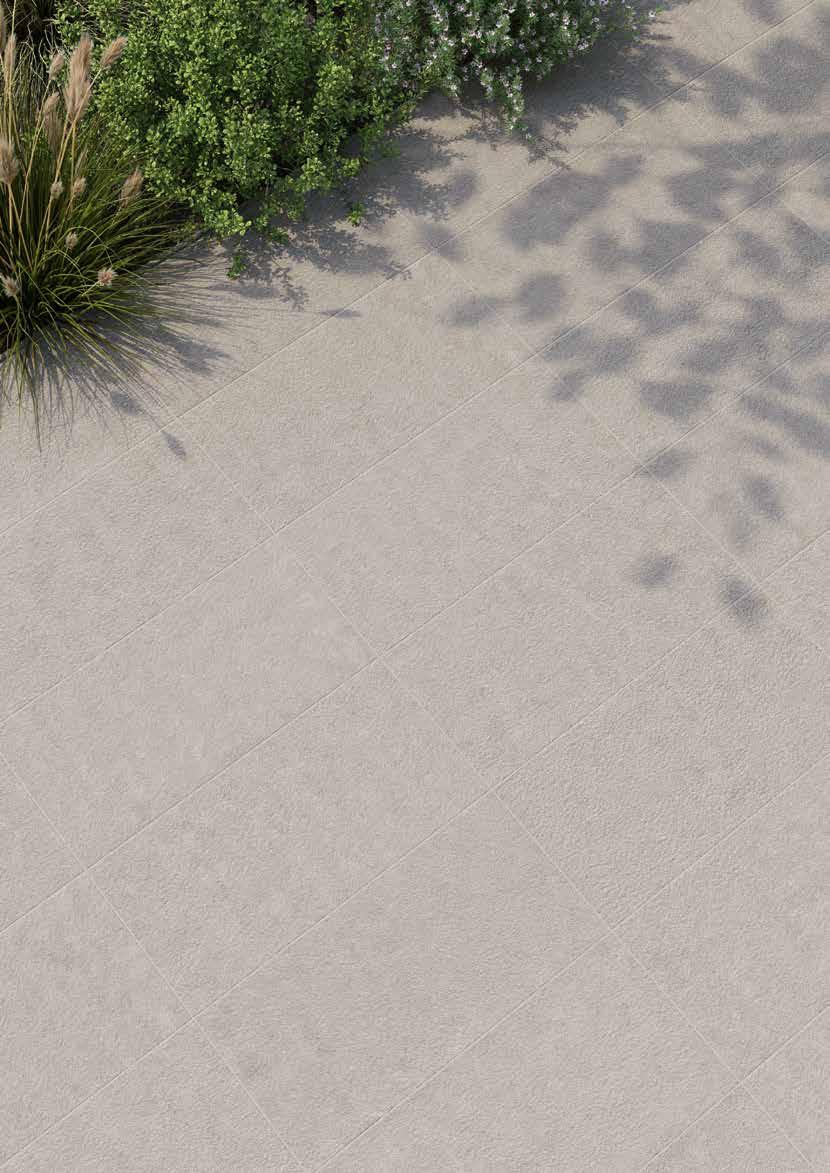

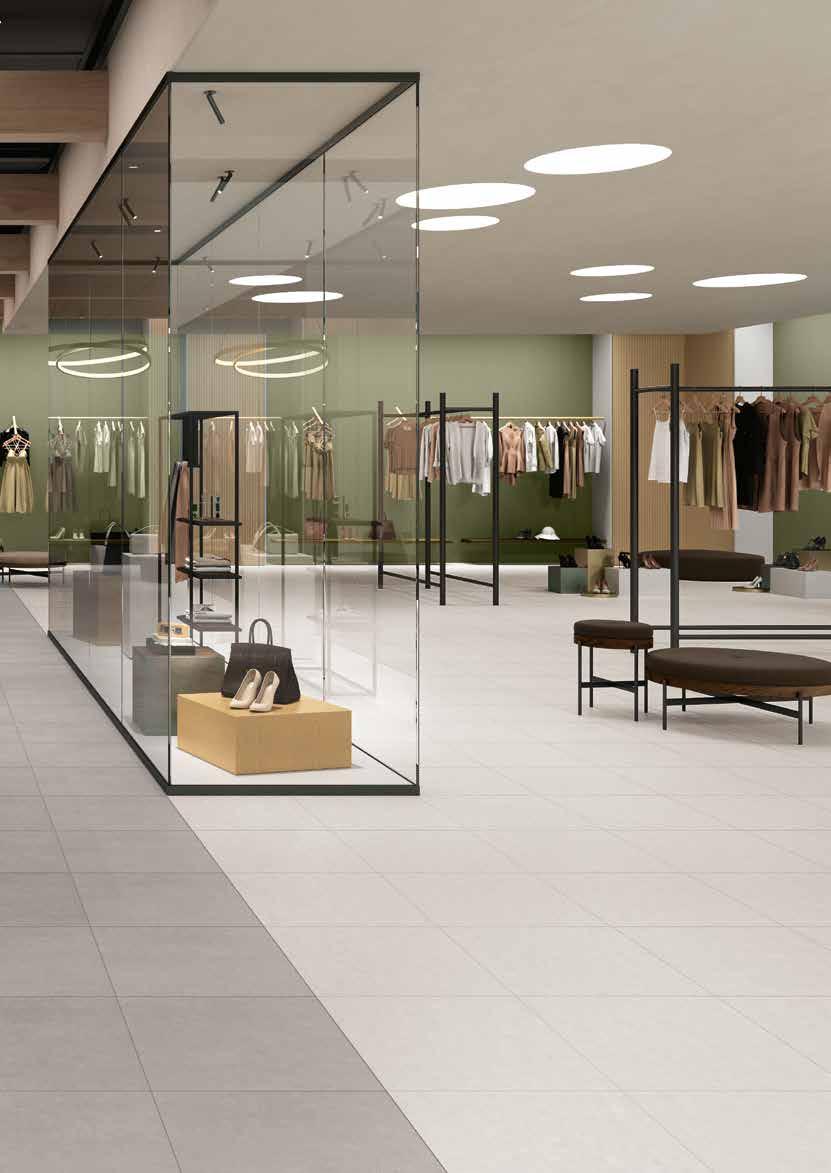
Casalgrande Padana è una delle poche aziende ancora in grado di realizzare un gres porcellanato così tecnicamente avanzato per il mondo dell’edilizia e dell’architettura, grazie a impianti e capacità produttive frutto di un’esperienza decennale. L’impasto a tutta massa, con venature e texture passanti lungo lo spessore, consente successive ulteriori levigature del prodotto senza alterarne le caratteristiche estetiche e funzionali.
Casalgrande Padana is one of the few companies manufacturing such advanced porcelain stoneware tiles for the construction and architectural world. The veining and texture of these full-body tiles run through their thickness, allowing for subsequent polishing without changing their aesthetic and functional characteristics.
Casalgrande Padana est l'une des rares entreprises encore capables de produire un grès cérame aussi techniquement avancé pour l’univers de la construction et de l'architecture, grâce à des installations et à des capacités de production fondées sur des décennies d'expérience. Le mélange pleine masse est caractérisé par des veines et des textures qui parcourent l'épaisseur. Il est donc possible de polir ultérieurement le produit sans en altérer les caractéristiques esthétiques et fonctionnelles.
Casalgrande Padana ist eines der wenigen Unternehmen, das dank seiner auf jahrzehntelanger Erfahrung basierenden Anlagen und Produktionskapazitäten noch in der Lage ist, ein technisch so fortschrittliches Feinsteinzeug für die Baubranche und die Architektur herzustellen. Die Vollkeramikmischung mit Äderungen und Texturen, die sich durch die gesamte Materialstärke ziehen, ermöglicht ein weiteres Abschleifen des Produkts, ohne seine ästhetischen und funktionellen Eigenschaften zu verändern.
Timeless tiles are high-performing, hard-wearing, and remain unchanged over time. As a result, they are ideal for residential and high-traffic public spaces, such as airports, shopping centres, and business centres._Inaltérable et performante, la collection Timeless résiste à l’usure et est idéale pour revêtir les espaces résidentiels et commerciaux ainsi que les lieux soumis à de fortes sollicitations, tels que les aéroports et les centres commerciaux et d’affaires._Timeless ist unveränderlich und leistungsstark und eignet sich ideal für die Verkleidung von Wohn- und Geschäftsräumen sowie von stark beanspruchten Bereichen wie Flughäfen, Einkaufszentren und Bürogebäuden.
Inalterabile, performante, Timeless non teme l’usura ed è ideale per rivestire ambienti residenziali, commerciali e spazi con destinazioni d’uso soggette a forti sollecitazioni quali aeroporti, centri commerciali e direzionali.
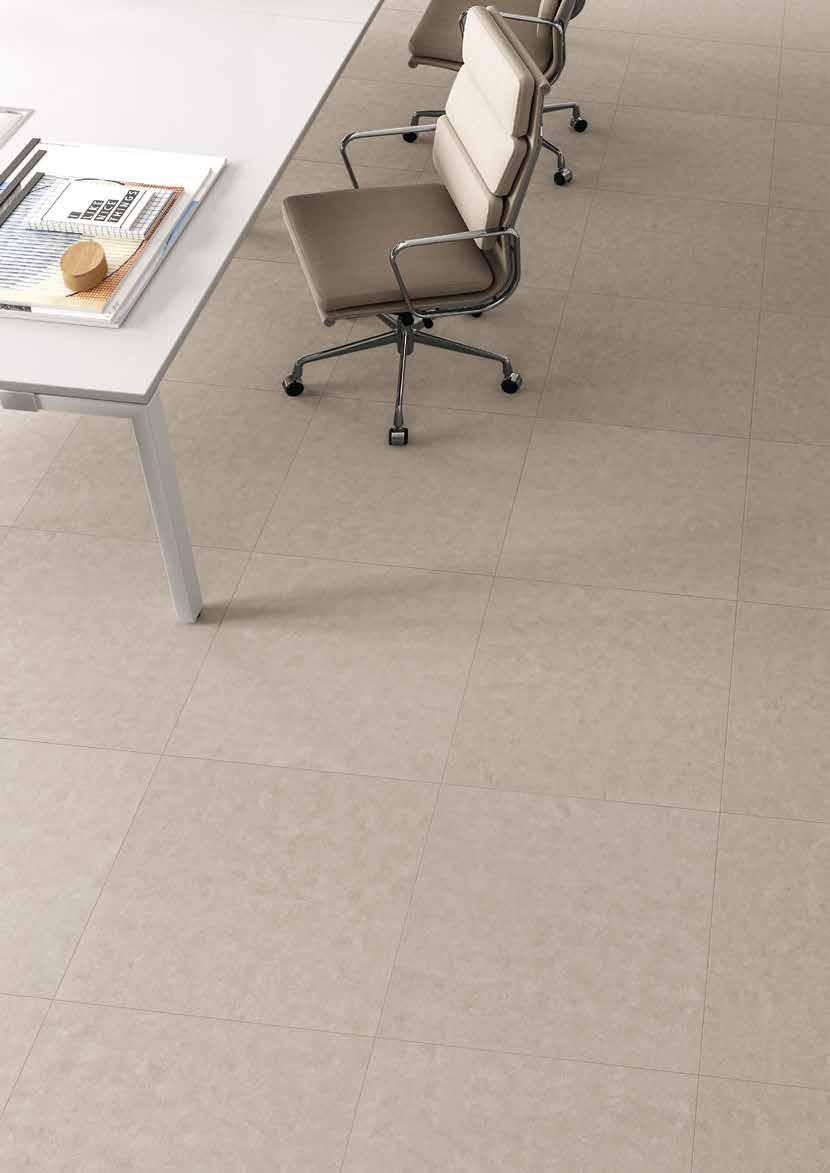
WALL: Taupe Naturale 60x120 cm
FLOOR: Taupe Naturale 60x60 cm
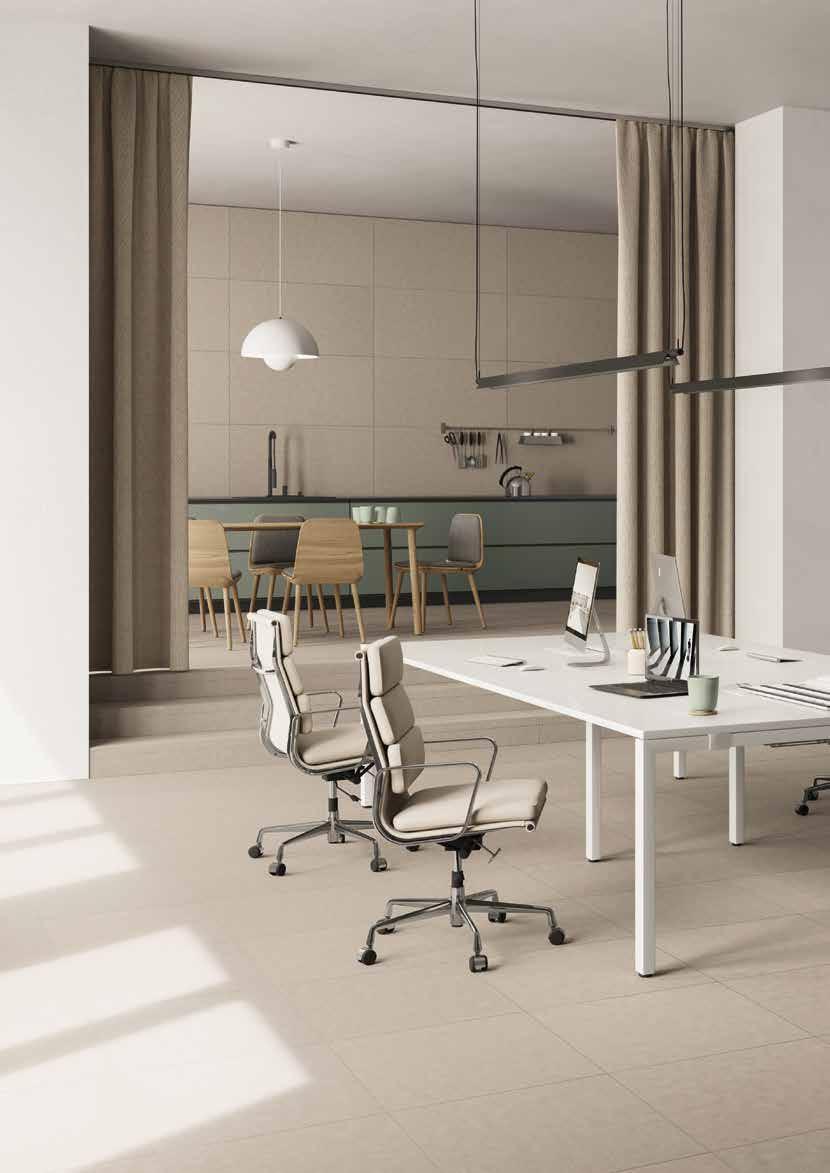
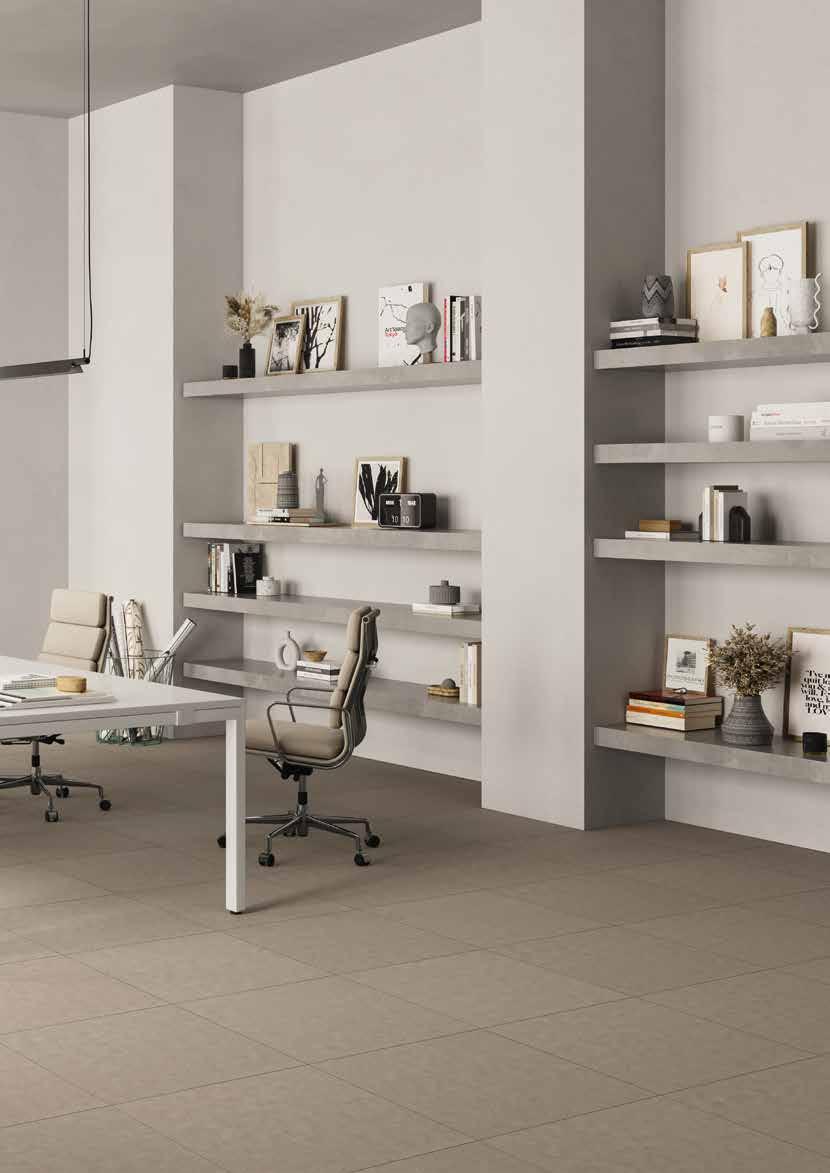
 WALL: Thunder Levigata 60x120 cm
WALL: Thunder Levigata 60x120 cm
Tonalità neutre ma estremamente calde, con una ricercata gradualità che ne consente armonici accostamenti, sono disponibili nei formati 60x120 cm, 60x60 cm, 30x60 cm con spessore 9,4 mm e finitura Naturale, Levigata, Grip R11. Lo spessore di 14 mm nel formato 60x60 cm accentua le caratteristiche di solidità e resistenza della collezione.
These tiles stand out for their warm, neutral colours and sophisticated shades, allowing beautiful combinations. They are available in three formats (60x120 cm, 60x60 cm, and 30x60 cm), three finishes (natural, polished, and Grip R11), and a 9.4 mm thickness. However, the 60x60 cm format is 14 mm thick, accentuating its solidity and wear resistance.
Des tonalités neutres mais extrêmement chaudes, avec des dégradés raffinés qui permettent de créer des combinaisons harmonieuses, sont proposées dans les formats 60x120 cm, 60x60 cm et 30x60 cm avec une épaisseur de 9,4 mm et une finition naturelle, polie ou antidérapante Grip R11. L’épaisseur de 14 mm dans le format 60x60 cm met l’accent sur les caractéristiques de solidité et de résistance de la collection.
Neutrale und doch sehr warme Farbtöne mit einer raffinierten Abstufung ermöglichen harmonische Kombinationen. Sie sind in den Formaten 60x120 cm, 60x60 cm, 30x60 cm mit einer Stärke von 9,4 mm und den Oberflächenausführungen Natur, Poliert und Grip R11 erhältlich. Die Stärke von 14 mm im Format 60x60 cm unterstreicht die charakteristischen Merkmale der Kollektion: Beständigkeit und Belastbarkeit.
Harmonious colour combinations play with surface reflectance maintaining colour depth._De douces associations jouent sur les divers degrés de réflectivité des surfaces et conservent la profondeur des couleurs._Sanft abgestimmte Kombinationen spielen mit dem unterschiedlichen Reflexionsgrad der Oberflächen und erhalten die Tiefe der Farben.
Morbidi abbinamenti giocano sulla diversa riflettenza delle superfici e mantengono inalterata la profondità dei colori.
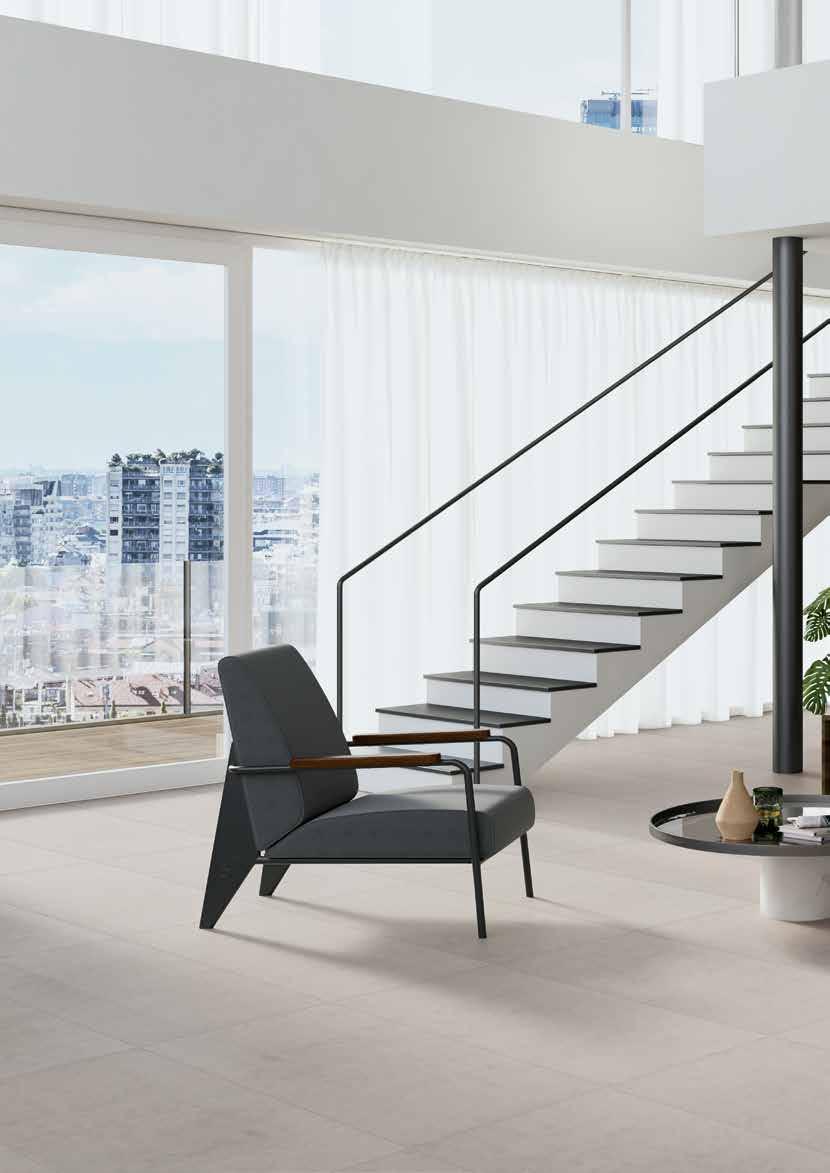


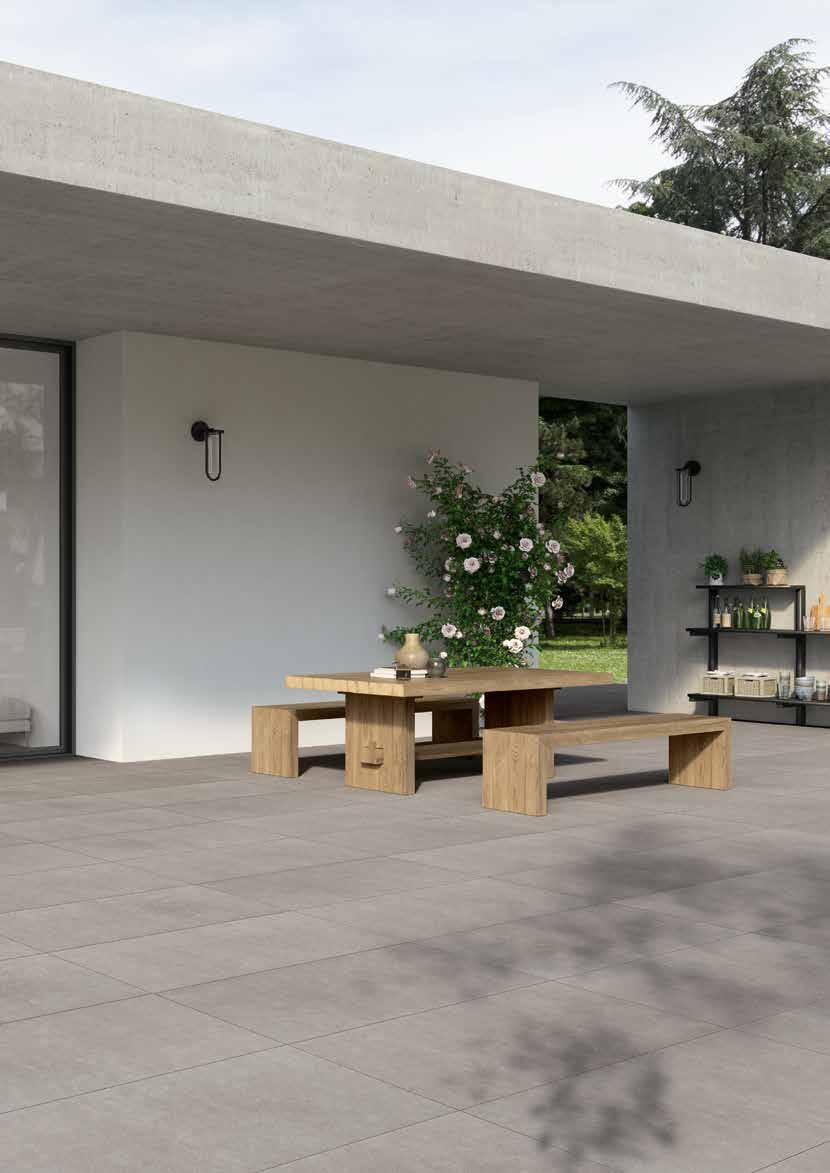
Superfici dall’estetica sobria ed estremamente compatta animano gli ambienti con sfumature calde, per soluzioni progettuali versatili, anche in abbinamento a materiali ceramici con effetti materici differenti.
Essential and compact surfaces bring spaces to life with their warm colours. Moreover, they allow for versatile solutions, even combined with tiles with different textures.
Des surfaces à l’esthétique épurée et extrêmement compacte animent les espaces avec des nuances chaudes et permettent de créer des solutions conceptuelles polyvalentes, également en association avec des matières céramiques aux textures différentes.
Oberflächen mit schlichter und äußerst kompakter Ästhetik erwecken Räumlichkeiten mit warmen Farbtönen zu neuem Leben. Sie eignen sich für vielseitige Gestaltungslösungen, auch in Kombination mit Keramikmaterialien mit verschiedenen Materialeffekten.
Subtle patterns ensure continuity and add simple elegance to the space._Des mouvements graphiques gracieux donnent une continuité à un grès cérame qui agrémente des espaces sobres et élégants._Anmutige grafische Bewegungen verleihen einem Feinsteinzeug Kontinuität, mit dem sich Räume mit essenzieller Eleganz gestalten lassen.
WALL: Ice Naturale 60x120 cm
FLOOR: Ice Naturale 30x60 cm
FURNITURE: Marmoker Calacatta Extra Lucida

WALL: Ice Naturale 60x120 cm
FLOOR: Ice Naturale 30x60 cm
FURNITURE: Marmoker Calacatta Extra Lucida

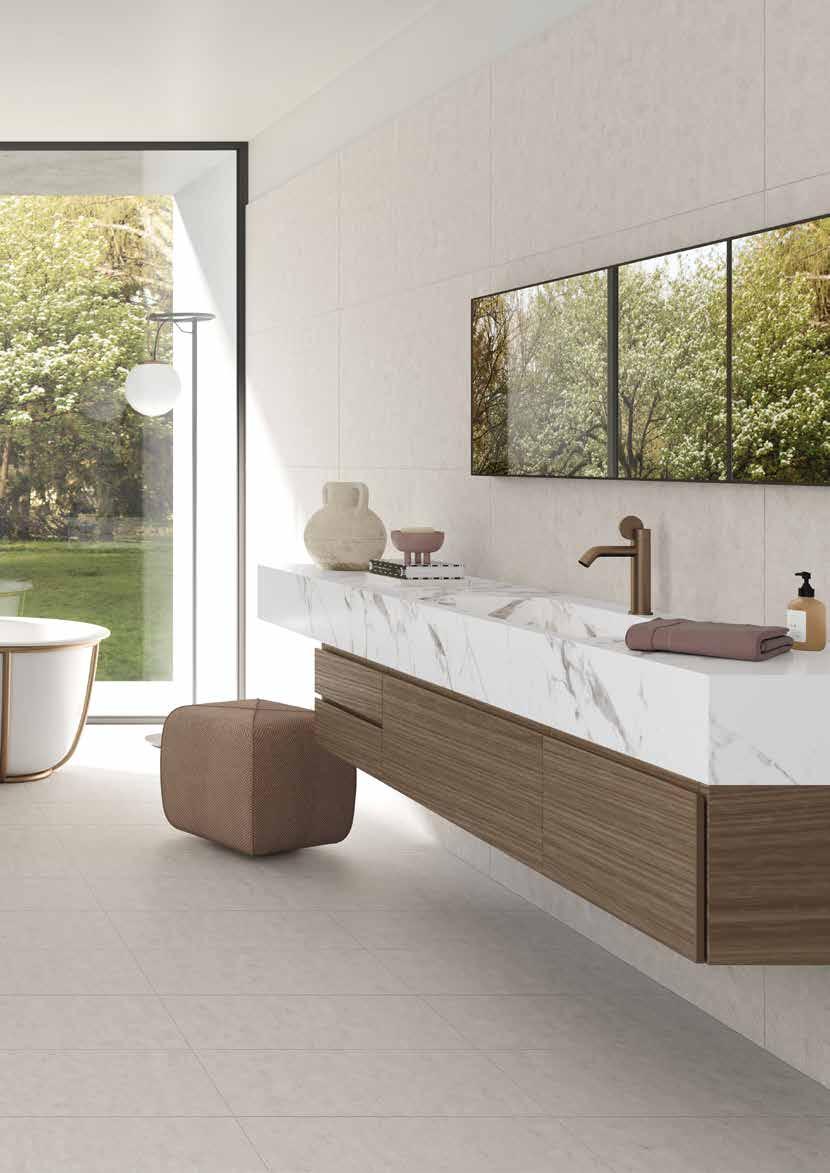


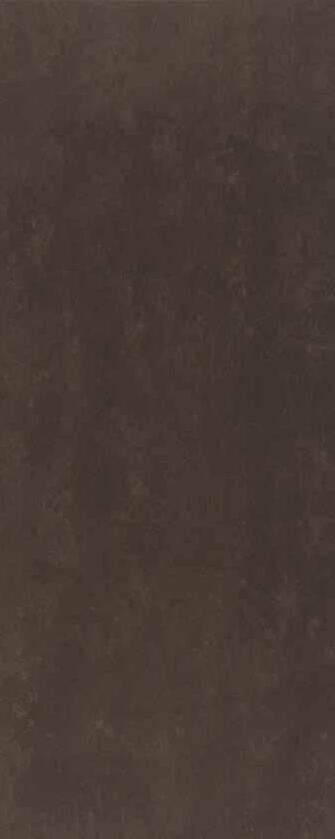



Sizes and thicknesses - Formats et épaisseurs - Formate und stärken
* Spessore su superficie naturale Thickness on matt surface Epaisseur sur surface mat Stärck der Fliesen mit Matt Oberfläche
** Su richiesta On request Sur demande Auf Anfrage können
Trims
Weight, size and contents of the packing - Poids, dimensions, contenu des colis - Verpackungsrößen/gewichte
Technical features - Caractéristiques techniques - Technische eigenschaften
Gres porcellanato Fully vitrified porcelain Grès cerame vitrifié Feinsteinzeug
PT0050
norma standards norme Norm
risultato prova* test results* resultats des essais* Ergebnisse*
classificazione prodotto product classification classement Klassifizierung
assorbimento di acqua water absorption absorption d’eau Wasseraufnahme
resistenza alla flessione flexural strength résistance à la flexion Biegezug-Festigkeit
resistenza al gelo frost resistance résistance au gel Frostwiderstandsfähigkeit
resistenza attacco chimico (esclusione acido fluoridrico) resistance to acids and alkalis (with the exception of hydrofluoric acid) résistance à l’attaque chimique (exclusion de l’acide fluorhydrique) Saüre und Laugen Beständigkeit (mit Ausnahme von Fluorwasserstoff)
resistenza usura e abrasione wear and abrasion resistance résistance à l’usure et abrasion Abriebhärte
dilatazione termica lineare linear thermal expansion coefficient linéaire de dilatation thermique Lineare Wärmeausdehnung
resistenza alle macchie stain resistance résistance aux taches Fleckenfestigkeit
resistenza alla scivolosità slip resistance résistance au glissement Trittsicherheit
resistenza dei colori alla luce colour resistance to sunlight exposure résistance de la couleur à la lumière Unveränderlichkeit der Farben wenn Strahlung zugesetzt wird
* valore indicativo approx value donnée approximative Ungefähre Werte
UNI EN 14411-G ISO 13006
UNI EN ISO 10545-2
gruppo Bla UGL completamente greificato group Bla UGL fully vitrified group Bla UGL grès cérame fin Gruppe B1a UGL Feinsteinzeug caratteristiche dimensionali e d’aspetto dimensional and surface quality caractéristiques de la surface Oberflächenqualität
tolleranze minime nella 1ª scelta very low tolerance des tolérances minimes en 1er choix Entspricht Normen
UNI EN ISO 10545-3 < 0,1%
UNI EN ISO 10545-4 > 45 N/mm2
qualsiasi norma all standards toute norme alle normen garantita guaranteed garantie Frostsicher
UNI EN ISO 10545-13 A
UNI EN ISO 10545-6 ≤ 150 mm3
UNI EN ISO 10545-8 6 x 10-6
UNI EN ISO 10545-14 garantita guaranteed garantie Garantiert
DIN 51130 Bocciardata R11
D.M. N° 236 DEL 14.06.89
METODO B.C.R. valore µ > 0,40 ***
BS7976-2:2002
BSEN13036-4:201 PTV > 36 ***
DIN 51094
nessuna variazione no change of colours couleurs inchangées Keinerlei Farbänderung
** Si rimanda all’elenco prodotti UPEC ufficiale, consultabile sul sito: Please see the official UPEC product list: Veuillez consulter la liste officielle produits UPEC: Sihe die offizielle UPEC-Produktliste auf der Website: http://webapp.cstb.fr/upec-ceramique/ *** prova su superficie asciutta test on a dry surface essai sur surface sèche Test auf trockener Oberfläche
Al pari dei materiali naturali di riferimento, l’aspetto estetico, la differenza di tono e le venature possono essere diverse da piastrella a piastrella. Per una corretta comprensione della variabilità del prodotto è consigliabile prendere visione delle immagini a tutto ambiente sul catalogo di collezione, sul nostro sito all’indirizzo www.casalgrandepadana.it o chiedere maggiori informazioni ai nostri concessionari. Just like the natural materials they are inspired by, the aesthetics, colouration and veining of the tiles can differ. To properly gauge the suitability of a product, we advise that you view the full-space photos that you can find in our collection catalogue and on our website at www.casalgrandepadana.com. Alternatively, please ask a reseller for more information. Tout comme pour les matières naturelles de référence, la différence de tonalité, les veines ainsi que l’aspect esthétique peuvent varier d’une dalle à l’autre. Pour bien comprendre la variabilité du produit, il est conseillé de consulter les images d’ambiance présentes sur le catalogue de la collection, sur notre site à l’adresse www. casalgrandepadana.fr ou de demander plus d’informations à nos concessionnaires. Wie bei den als Vorbild dienenden Naturmaterialien können sich auch hier das ästhetische Erscheinungsbild, der Farbtonunterschied und die Maserung von Fliese zu Fliese unterscheiden. Um die Variabilität des Produkts besser zu verstehen, raten wir Ihnen, die Bilder mit ausgestatteten Räumen im Kollektionskatalog auf unserer Website www.casalgrandepadana.de zu konsultieren. Weitere Informationen können Sie auch bei unseren Vertragshändlern erhalten.
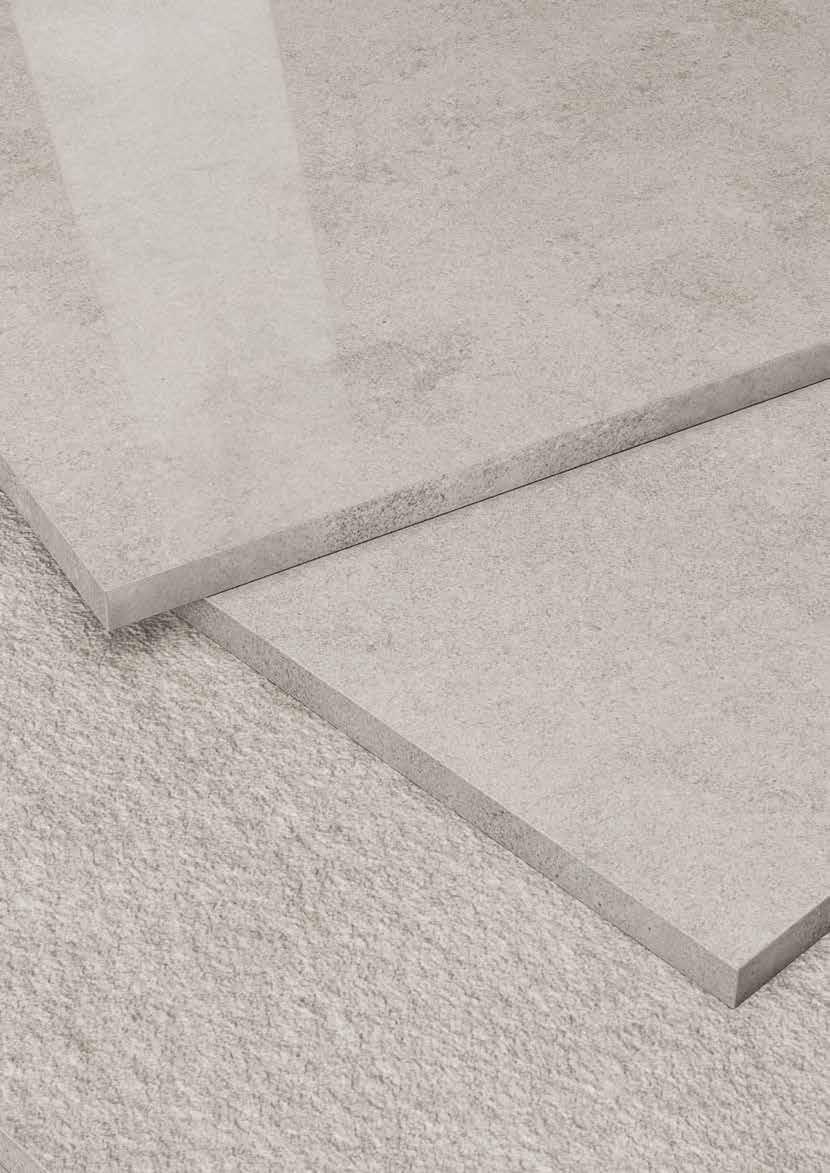
Installation and maintenance - Pose et entretien - Verlegung und pflege
La riuscita di un pavimento è dovuta non solo alla qualità delle piastrelle, ma a tutto un insieme di elementi (sottofondo, strato legante, giunti di dilatazione, ecc.) che costituiscono un vero e proprio sistema. Ecco perché le operazioni di posa sono da considerarsi importanti tanto quanto la scelta delle piastrelle. È comunque compito del progettista stabilire, in funzione della struttura e della destinazione d’uso del piano di calpestio, il corretto modo di applicazione delle piastrelle e il tipo di piastrella da utilizzare. Le piastrelle Casalgrande Padana non si differenziano, per quanto riguarda le operazioni di posa, da una qualsiasi altra ceramica e si può quindi seguire sia il sistema tradizionale con malta cementizia, che quello con collanti o adesivi. È consigliabile ricorrere ad un sistema di posa con adesivo, da prescriversi in funzione dell’ambiente di destinazione, della tipologia e delle caratteristiche del supporto di posa, del formato considerato e dei carichi statici/dinamici agenti sulla piastrellatura ceramica. È inoltre necessario verificare, prima di procedere alla posa, che il supporto possieda idonee caratteristiche per l’incollaggio della ceramica, quali: stabilità e regolarità dimensionale, rigidità, assenza di fessurazioni, pulizia e integrità superficiale, assenza di umidità in eccesso e/o di agenti contaminanti
Prima di iniziare le operazioni di posa di una qualsiasi superficie si raccomanda di accertarsi che la partita di grès sia adeguata e sufficiente per quantità, tono e calibro, a quella necessaria. Si dovranno poi seguire tutte le norme e le precauzioni che sono alla base di una corretta esecuzione del lavoro (preparazione del sottofondo, composizione della malta o dei collanti, tempi di maturazione, posizionamento dei giunti di dilatazione, battitura, ecc.).
Se per ambienti di grandi dimensioni è assolutamente necessario posizionare i giunti con regolarità, per piccoli ambienti è sufficiente lasciare un leggero stacco fra piastrellato e muri perimetrali. Sarà poi il battiscopa a coprire lo stacco dando un aspetto di finitura. Evitare il transito sul pavimento per almeno 2/3 giorni dopo la posa. In caso di necessità di transito si dovrà predisporre un tavolato appoggiato sul pavimento. Durante le operazioni di posa si raccomanda di proteggere adeguatamente il pavimento, con particolare attenzione ai prodotti con superficie lucida o levigata. La protezione dovrà essere mantenuta sino al termine del cantiere in modo tale da evitare danni causati da sostanze abrasive o da altri agenti dannosi.
Le piastrelle Casalgrande Padana pur essendo materiale molto resistente, possono essere sagomate o perforate per l’installazione di impianti tecnico sanitari, utilizzando una attrezzatura adeguata. Un pavimento o rivestimento murale Casalgrande Padana sia nella versione naturale che lappata, lucida, o levigata, è sinonimo di bellezza, durata e resistenza nel tempo. La sua manutenzione non richiede particolari cure se non l’attenersi alle seguenti norme di pulizia.
Prima pulizia
Ha lo scopo di eliminare ogni traccia di cemento o stucco conseguente alla chiusura dei giunti. Si esegue normalmente una sola volta prima dell’utilizzo del pavimento/rivestimento e deve essere obbligatoriamente eseguita prima dell’uso del pavimento/rivestimento.
Procedere nel modo seguente:
1. Spazzare il pavimento/rivestimento raccogliendo lo sporco grossolano.
2. Inumidire con acqua la superficie affinché le fughe vengano impregnate e pertanto protette dall’azione corrosiva del detergente a componente acida (decalcificante).
3. Stendere il detergente (vedi nota A) nella concentrazione (rapporto di miscelazione con l’acqua) indicata dal produttore, applicandolo con una spazzola manuale o motorizzata. Evitare che il detergente acido venga a contatto con componenti di acciaio, alluminio e marmo naturale adiacenti al pavimento/rivestimento
4. Durante il tempo d’azione del detergente, che deve essere stabilito in relazione allo stato del pavimento, strofinare lo sporco più ostinato (e raschiare eventuali residui di malta, stucco, etc…).
5. Sciacquare il pavimento/rivestimento con acqua e raccogliere subito l’acqua sporca (manualmente o con un apparecchio lavasciuga).
Se la prima pulizia viene eseguita dopo che il pavimento/rivestimento è già stato usato, sarà bene, prima dell’applicazione del detergente a base acida, togliere con appositi detersivi alcalini (sgrassanti) eventuali presenze di sostanze grasse o simili (vedi Pulizia ordinaria).
L’operazione di prima pulizia, se ritenuto necessario, può essere ripetuta.
Superficie levigata, lucida e lappata Com’è noto tutte le superfici lucide subiscono con l’uso un processo di opacizzazione. Nel caso dei prodotti Casalgrande Padana, grazie alle peculiari caratteristiche tecniche, questo processo è più lento rispetto a qualsiasi altro materiale naturale (marmo, granito, pietre...). Per conservare tuttavia il più a lungo possibile la lucentezza originale del pavimento è bene proteggere l’ingresso del locale pavimentato, specie se questo è in diretta comunicazione con ambienti esterni, con uno zerbino che possa trattenere il più possibile polveri o altre sostanze abrasive fuori dal pavimento. Una leggera diminuzione della lucentezza, a seguito del primo lavaggio acido del pavimento, deve essere considerata normale, perché dovuta alla eliminazione dei residui degli abrasivi utilizzati nella lavorazione della superficie.
A) Alcuni detergenti consigliati per eliminare i residui di stucco: Fughe realizzate con stucco cementizio - detergenti a componente acida (decalcificanti)
Deterprimo plus (Casalgrande Padana), Deterdek (Fila), Keranet (Mapei), Deltaplus (Kerakoll), Solvacid (Geal) o simili (seguire istruzioni del produttore del detergente).
Fughe realizzate con stucco epossidico – detergenti a componente alcalina Fuga-Soap Eco (Kerakoll), Kerapoxy Cleaner (Mapei), Tile Cleaner (Faber), CR10 (Fila), Lithofin Resin-Ex (Lithofin), Eposolv (Geal) o simili (seguire istruzioni del produttore del detergente).
Pulizia ordinaria
Per la pulizia di tutti i giorni è sufficiente lavare il pavimento/rivestimento con acqua e aggiunta di normali prodotti detergenti adatti a pulire superfici ceramiche (per i rivestimenti utilizzare detergenti in gel).
Assicurarsi che i detergenti non contengano sostanze cerose; la superficie dei prodotti Casalgrande Padana, essendo praticamente inassorbente, non richiede l’applicazione di cere e/o prodotti siliconici di protezione che, al contrario, non debbono mai essere usati perché possono creare un film superficiale che andrebbe a modificare le caratteristiche naturali del grès porcellanato.
In presenza di macchie persistenti e difficili da togliere con la semplice pulizia ordinaria, intervenire con impiego di detergenti più concentrati lasciando agire gli stessi per un adeguato intervallo di tempo e, successivamente, strofinare con adeguata intensità, fino a ricondurre le piastrelle all’aspetto originario. Al riguardo è opportuno segnalare che il grès è resistente a qualsiasi sostanza chimica, eccezion fatta per l’acido fluoridrico che attacca tutti i prodotti ceramici e che, quindi, non deve mai essere utilizzato. Per la pulizia di pavimenti in aree pubbliche si consiglia di intervenire dopo la chiusura dei locali, affinché il pavimento alla riapertura sia asciutto; in alternativa isolare il pavimento pulito fino alla sua completa asciugatura.
Per i locali di maggiore estensione è opportuno disporre di macchine lavasciuga, per assicurare una perfetta pulizia e igienicità.
Il pavimento deve essere considerato pulito quando riacquista il suo aspetto originario!
Superfici in rilievo (antislip)
Queste superfici, impiegate normalmente in ambienti industriali o di lavoro, richiedono particolari accorgimenti per la loro manutenzione.
Per i locali di maggiore estensione è opportuno disporre di macchine lavasciuga, per assicurare una perfetta pulizia e igienicità. Altro metodo usato in questo tipo di pavimenti è quello mediante idropulitrice.
The successful installation of floors depends not only on the quality of tiles but on a combination of factors (bedding, binding layer, expansion joints, etc.) that constitute a real system.
That is why installation operations are to be considered as important as the choice of tiles. However, based on the structure and purpose of the flooring surface, the designer is still responsible for defining the correct procedure to lay the tiles and selecting the ones to be employed.
When it comes to installation operations, Casalgrande Padana do not differ from any other type of ceramic: either the traditional procedure envisaging cement mortar or the procedure envisaging glues and adhesives may be resorted to. We recommend using an installation system with an adhesive according to the intended use of the room, type and characteristics of the substrate, and size in consideration of the static/dynamic loads on the ceramic tiles. You must first ensure that the substrate has suitable characteristics for glueing ceramics, such as stability and dimensional regularity, rigidity, absence of cracks, clean and intact surface, and absence of excess moist and/or contaminants.
Before starting the installation operations of any surface, we recommend you make sure that the stoneware batch is adequate and sufficient in terms of quantity, tone and calibration.
Moreover, all necessary norms and precautions need to be implemented for the correct completion of the work (bedding preparation, composition of mortar or adhesives, maturing period, positioning expansion joints, ramming, etc.). If in case of large environments joints must be positioned at regular intervals, in small environments a small gap between the tiles and perimeter walls is sufficient: the skirting board will cover the gap and provide the finishing effect.
Avoid walking on the floor for at least 2/3 days after installation. If walking on the floor is necessary, lay wooden planks on the surface.
During laying operations, it is recommended to adequately protect the floor, paying particular attention to products with a glossy or polished surface. This protection must be maintained until the construction work is complete in order to avoid damage caused by abrasive substances or other harmful agents.
Even though Casalgrande Padana tiles are very resilient material, they can be shaped or perforated to install technical and sanitary systems, using appropriate equipment. A Casalgrande Padana flooring or wall covering – whether natural, lapped, gloss or polished – is synonymous with beauty, strength and a long life. These surfaces are low maintenance and only need be cleaned as described below.
The purpose of first-time cleaning is to remove any trace of cement or plaster used to close the joints.
The flooring/wall covering is normally cleaned once before use. This must be done before the flooring/wall covering is used.
Proceed as follows:
1. Sweep the floor/covering to remove the coarser dirt.
2. Dampen the surface with water so as to soak the joints, thereby protecting them from the corrosive action of the acid detergent (descaling product).
3. Apply the detergent (see note A) in the concentration (water mixing ratio) indicated by the manufacturer using a manual or motorised brush. Avoid any contact between the acid detergent and the steel, aluminium, and natural marble components near the flooring/wall covering.
4. Leave the detergent on as long as needed, depending on the condition of the floor, then rub any stubborn dirt away (and scrape off residues of mortar, plaster, etc. …).
5. Rinse the flooring/covering with water and mop up the dirty water immediately (manually or with a washer/drier).
If the flooring/wall covering is cleaned for the first time after being used, it is important to use appropriate alkaline detergents (degreasing agents) before applying the acid detergent to remove any greasy or similar substance (see Routine Cleaning). If necessary, you can repeat the firsttime cleaning operations described above.
All polished surfaces tend to become more opaque with use. Because of its outstanding technical properties, with Casalgrande Padana products this process is slower than for any other natural material (marble, granite, stone, etc.). However, to protect the floor’s shine for as long as possible, it’s important to protect the entrance to the floored room, especially if it has an adjoining outdoor area, with a doormat that can keep as much dust or abrasive substances as possible off the floor.
A slight loss of shine after the first acid wash must be considered normal, as it is due to the removal of the abrasive residues used for processing the surface.
A) Here are a few detergents recommended for removing plaster residues:
Cement plaster joints – acid detergents (descaling products)
Deterprimo Plus (Casalgrande Padana), Deterdek (Fila), Keranet (Mapei), Deltaplus (Kerakoll), Solvacid (Geal) or similar detergents (follow the manufacturer’s instructions).
Epoxy plaster joints – alkaline detergents
Fuga-Soap Eco (Kerakoll), Kerapoxy Cleaner (Mapei), Tile Cleaner (Faber), CR10 (Fila), Lithofin Resin-Ex (Lithofin), Eposolv (Geal) or similar detergents (follow the manufacturer’s instructions).
For everyday cleaning, all you have to do is wash the flooring/wall covering with water and normal neutral detergents suitable for ceramic surfaces (for wall coverings use a neutral gel detergent gel). Make sure that the detergents do not contain waxy substances. The surfaces of Casalgrande Padana products are practically non-absorbent; therefore, the use of wax and/or silicone cleaners is not required. These should never be used, as they create a superficial film that changes the natural characteristics of porcelain stoneware.
Should there be any stubborn stain that cannot be removed by routine cleaning, use a more concentrated detergent and leave it on for long enough, then rub harder until the tiles are back to their original condition. Note that porcelain stoneware is resistant to any chemical, except hydrofluoric acid, which eats into any ceramic, so it must never be used. Floors of public areas should be cleaned when the place is closed, so the floor will be dry when it reopens; otherwise, fence off the cleaned floor until perfectly dry. For larger places, use a washer/drier to ensure perfect cleanliness and hygiene.
The flooring is to be considered clean when it returns to its original appearance!
Anti-slip flooring
These surfaces are normally used in industrial or work environments and require a few extra measures for their maintenance. For larger places, use a washer/drier to ensure perfect cleanliness and hygiene. These floors can also be cleaned using a pressure washer.
Installation and maintenance - Pose et entretien - Verlegung und pflege
POSE
Un bon sol dépend non seulement de la qualité des carreaux, mais aussi de toute une série d’éléments qui constituent un seul tout (couche de fond, couche d’un agent liant, joints de dilatation, etc.). C’est pourquoi les opérations de pose sont tout aussi importantes que le choix du carrelage. Il appartient à l’architecte d’établir le type de carrelage à utiliser en fonction du lieu et de l’utilisation du sol ainsi que la meilleure méthode de pose des carreaux. En ce qui concerne les opérations de pose, les séries Casalgrande Padana ne sont pas différentes des autres carreaux céramiques et il est donc possible de suivre la méthode traditionnelle en utilisant du mortier de ciment ou d’utiliser des colles ou autres produits adhésifs. Il est conseillé de recourir à un système de pose avec de l’adhésif, à adopter en fonction de l’environnement de destination, de la typologie et des caractéristiques du support de pose, du format envisagé et des charges statiques/dynamiques appliquées sur le carrelage en céramique. Avant de procéder à la pose, il est également nécessaire de s’assurer que le support possède les caractéristiques appropriées pour le collage de la céramique. Ces caractéristiques sont les suivantes : stabilité et régularité dimensionnelle, rigidité, absence de fissures, nettoyage et intégrité de la surface, absence d’excès d’humidité et/ou d’agents de contamination. Avant de commencer les opérations de pose, il est recommandé de vérifier que les lots de carreaux en grès correspondent bien à la quantité, à la couleur et au calibre nécessaires. Il faut ensuite respecter toutes les normes et les précautions qui sont à la base de la bonne exécution des travaux (préparation de la couche de fond, composition du mortier ou des colles, positionnement des joints de dilatation, nivellement à l’aide du maillet, temps de séchage, etc.). Pour les grandes surfaces, il est absolument nécessaire de positionner les joints avec la plus grande régularité, tandis que pour les petites surfaces, il suffira de laisser un léger écart entre le carrelage et les murs périmétraux. Ce seront ensuite les plinthes qui couvriront l’écart pour donner l’aspect de finition. Après la pose, éviter de marcher sur le sol pendant au moins 2 ou 3 jours. Si le passage s’avère nécessaire, il faudra poser des planches sur le sol. Au cours des opérations de pose, il est recommandé de protéger le sol de manière adéquate, en prenant particulièrement soin des produits présentant une surface brillante ou polie. La protection devra être maintenue jusqu’à la fin des travaux afin d’éviter tout dommage pouvant être causé par des substances abrasives ou par d’autres agents nocifs. Même si les carreaux des séries Casalgrande Padana sont extrêmement résistants, ils peuvent être façonnés et perforés pour installer les équipements technicosanitaires en utilisant les outils appropriés. Les revêtements de sol et de mur de installation operations, Casalgrande Padana, qu’ils soient en version naturelle, poncée, brillante ou polie, sont synonymes de beauté, de solidité et de durabilité. Ils n’exigent aucune opération d’entretien particulière, il suffit de suivre les conseils d’entretien suivants :
Premier nettoyage
Son but est d’éliminer toute trace de ciment ou de mortier-colle après le jointoiement. Cette opération est généralement effectuée une seule fois avant d’utiliser le revêtement sol/mur, et il faut obligatoirement l’effectuer avant toute utilisation du revêtement sol/mur.
Procéder de la manière suivante :
1. Balayer/épousseter le revêtement sol/mur en éliminant toutes traces d’impuretés.
2. Humidifier la surface avec de l’eau de manière à bien imprégner les joints afin qu’ils soient ainsi bien protégés de l’action corrosive du nettoyant acide (décalcifiant).
3. Respecter la concentration (quantité à diluer dans l’eau) indiquée par le fabricant pour l’utilisation du produit nettoyant, et appliquer le produit (voir note A) à l’aide d’une brosse manuelle ou motorisée. Veillez à ce que le nettoyant acide n’entre pas en contact d’éléments en acier et en aluminium, ou d’éléments en marbre naturel placés à proximité du revêtement sol/mur.
4. Pendant le temps d’action du nettoyant, à établir en fonction de l’état du sol, frotter les taches les plus persistantes (et racler d’éventuels résidus de mortier, de mortier-colle, etc.).
5. Rincer le revêtement sol/mur avec de l’eau, puis éliminer immédiatement l’eau sale (à la main ou avec un appareil de nettoyage à aspiration d’eau).
Si le premier nettoyage est effectué après avoir utilisé le revêtement sol/mur, avant d’appliquer le nettoyant acide, il est conseillé d’éliminer toute éventuelle trace de substance grasse ou similaire en utilisant les nettoyants alcalins (dégraissants) prévus à cet effet (voir Nettoyage ordinaire).
S’il y a lieu, répéter cette première opération de nettoyage.
Surface polie, brillante ou poncée
Il est notoire que les surfaces brillantes ont tendance à se ternir au fil du temps. Dans le cas des produits Casalgrande Padana, leurs caractéristiques techniques particulières permettent de ralentir ce processus par rapport à tout autre matériau naturel (marbre, granit, pierres, etc.). Pour conserver plus longtemps l’éclat original du sol, il est conseillé de protéger l’entrée de la pièce avec un tapis ou avec un paillasson en cas de pièces donnant sur l’extérieur, en empêchant ainsi que la poussière et/ou d’autres substances abrasives ne puissent se déposer sur le sol. Après le premier lavage avec le produit acide, une légère diminution de la brillance doit être considérée normale, étant due à l’élimination des résidus abrasifs utilisés lors du traitement de surface effectué en usine.
A) Voici certains nettoyants conseillés pour éliminer les résidus de mortier-colle : Joints réalisés en mortier-ciment – nettoyants acides (décalcifiants)
Deterprimo plus (Casalgrande Padana), Deterdek (Fila), Keranet (Mapei), Deltaplus (Kerakoll), Solvacid (Geal) ou produits similaires (suivre les instructions du fabricant du produit nettoyant).
Joints réalisés en mortier-époxy – nettoyants alcalins Fuga-Soap Eco (Kerakoll), Kerapoxy Cleaner (Mapei), Tile Cleaner (Faber), CR10 (Fila), Lithofin Resin-Ex (Lithofin), Eposolv (Geal) ou produits similaires (suivre les instructions du fabricant du produit nettoyant).
Nettoyage ordinaire
Pour le nettoyage quotidien, il suffit de laver le revêtement sol/mur avec de l’eau en y diluant des produits nettoyants adaptés aux surfaces en céramique (pour les murs, utiliser des produits nettoyants sous forme de gel).
S’assurer que les produits nettoyants ne contiennent pas de substances à base de cire ; la surface des produits Casalgrande Padana étant pratiquement non absorbante, il n’y a aucun besoin de passer ni cire ni autre produit similaire de protection à base de silicone ; bien au contraire, ces produits ne doivent jamais être utilisés car ils pourraient créer un film superficiel susceptible de modifier les caractéristiques naturelles du grès cérame.
Néanmoins, en cas de taches persistantes et difficiles à éliminer par un simple nettoyage ordinaire, utiliser un produit nettoyant plus puissant en le laissant agir pendant un temps adéquat, puis frotter énergiquement jusqu’à ce que le carrelage retrouve son aspect d’origine. Il est intéressant de signaler que le grès résiste aux substances chimiques, à l’exception de l’acide fluorhydrique qui attaque tous les produits céramiques et qui ne doit donc jamais être utilisé.
Pour le nettoyage de lieux publics, il est conseillé d’effectuer l’entretien après la fermeture des locaux, afin que le sol soit bien sec avant la réouverture. En alternative, isoler le sol nettoyé jusqu’à ce qu’il soit complètement sec.
Pour le nettoyage des sols sur de grandes surfaces, il convient d’utiliser des autolaveuses, pour garantir une hygiène et un nettoyage parfaits.
Le sol doit être considéré comme propre lorsqu’il retrouve son aspect d’origine !
Surfaces en relief (antidérapant)
Pour l’entretien de ces surfaces, employées habituellement dans des environnements industriels ou professionnels, il convient de prendre des précautions particulières. Pour les grandes surfaces, il convient d’utiliser des autolaveuses pour garantir un nettoyage optimal et une hygiène parfaite. Une autre méthode consiste à utiliser des machines de nettoyage à l’eau sous pression.
VERLEGUNG
Das gute Gelingen eines Bodenbelags hängt nicht nur von der Qualität der Fliesen ab, sondern von einer ganzen Reihe an Elementen (Untergrund, Bindeschicht, Dehnungsfugen, usw.), die ein Gesamtsystem bilden. Deshalb sind die Verlegungsarbeiten genauso wichtig, wie die Wahl der Fliesen. Der Planer hat die Aufgabe, je nach Struktur und Bestimmungszweck der Bodenfläche die korrekte Fliesen-Verlegungsmethode und die Art der einzusetzenden Fliesen zu bestimmen. Casalgrande Padana unterscheiden sich in Bezug auf die Verlegungsarbeiten nicht von anderen Keramikprodukten, so dass die Verlegung sowohl auf traditionelle Art mit Zementmörtel als auch mit Leimen oder Klebstoffen erfolgen kann. Es wird empfohlen, ein Verlegesystem mit Klebstoff zu verwenden, das der vorgesehenen Umgebung, der Art und den Eigenschaften des Untergrunds, am gewünschten Format und der auf die Fliesen einwirkende statischen bzw. dynamische Kraft vorgeschrieben wird.Vor der Verlegung ist eine Prüfung erfordert, der Untergrund die entsprechenden Eigenschaften für eine Verklebung von Keramikfliesen besitzt. Entscheidend hierfür sind ein gleichbleibendes, regelmäßiges Flächenmaß, Steifigkeit, keine Risse, saubere Oberfläche frei von Fehlstellen, keine verbleibende Feuchtigkeit und/oder Schadstoffverunreinigungen. Vor Beginn der Verlegung auf jeglichen Oberflächen ist unbedingt sicher zu stellen, dass das Steinzeug geeignet ist und in der notwendigen Menge und im gewünschten Farbton und Werkmaß zur Verfügung steht. Es müssen zudem alle Vorschriften und Vorkehrungen beachtet werden, die einer korrekten Ausführung der Arbeiten zu Grunde liegen (Vorbereitung des Untergrundes, Zubereitung des Mörtels oder der Kleber, Abbindezeiten, Position der Dehnungsfugen, Anklopfen, usw.). In großflächigen Bereichen sind unbedingt regelmäßig Dehnungsfugen einzuplanen, während es in kleinen Bereichen genügt, ein wenig Abstand zwischen Fliesenfläche und Randmauern zu lassen. Mit der Sockelleiste wird dieser Abstand dann abgedeckt, um den Boden fertig zu stellen. Nach dem Verlegen darf der Boden mindestens 2-3 Tage nicht begangen werden. Falls ein Begehen notwendig sein sollte, müssen zuvor Planken auf den Boden gelegt werden. Während der Verlegearbeiten sollte der Bodenbelag angemessen geschützt werden, wobei vor allem Produkte mit glänzender oder polierter Oberfläche mit Vorsicht zu behandeln sind. Der Schutz muss bis zum Abschluss der Bauarbeiten beibehalten werden, um Beschädigungen durch abrasive Substanzen oder andere schädliche Agentien zu vermeiden. Obwohl es sich bei den Platten von Casalgrande Padana um hochresistente Materialien handelt, lassen sie sich für die Installation von technischsanitären Anlagen unter Verwendung geeigneter Geräte zuschneiden oder bohren. Ein Fußboden oder eine Wandverkleidung von Casalgrande Padana ist sowohl in der natürlichen wie auch anpolierten, polierten oder geschliffenen Ausführung Ausdruck von Schönheit, Widerstandsfähigkeit und Langlebigkeit. Die Instandhaltung solcher Beläge verlangt keine besonderen Pflegemaßnahmen, sondern lediglich die Beachtung der folgenden Reinigungsverfahren.
Erstreinigung
Sie dient dazu, nach der Verfugung jegliche Spur von Zement oder Fugenmörtel zu entfernen. Sie wird normalerweise nur einmal vor Beginn der Verwendung des Fußbodens bzw. der Wandverkleidung durchgeführt und sollte vor der Nutzung vorgenommen werden.
Gehen Sie dazu folgendermaßen vor:
1. Den Fußboden/die Verkleidung fegen und den groben Schmutz entfernen.
2. Die Oberfläche mit Wasser befeuchten, um die Fugen zu imprägnieren und somit vor der ätzenden Wirkung des säurehaltigen Reinigungsmittels (Kalklöser) zu schützen.
3. Das Reinigungsprodukt (siehe Anmerkung A) in der vom Hersteller vorgegebenen Konzentration (Mischverhältnis mit Wasser) mit einer Handbürste oder einer motorbetriebenen Bürste auftragen. Den Kontakt des säurehaltigen Reinigungsmittels mit etwaigen Komponenten aus Stahl, Aluminium und Naturmarmor vermeiden, die am Fußboden/an der Wandverkleidung angrenzen.
4. Während der Wirkzeit des Reinigungsmittels, die je nach Zustand des Fußbodens festzulegen ist, den hartnäckigsten Schmutz abreiben (und etwaige Mörtel- und Kittrückstände usw. abkratzen).
5. Den Fußboden/die Wandverkleidung mit Wasser abspülen und das Schmutzwasser sofort aufnehmen (von Hand oder mit einer Bodenreinigungsmaschine).
Wenn die Erstreinigung erst nach der Benutzung des Fußbodens/der Wandverkleidung erfolgt, müssen vor der Anwendung des säurehaltigen Reinigungsmittels etwaige Fette oder ähnliche Stoffe mit geeigneten Alkalireinigern (Fettlösern) entfernt werden (siehe Normale Reinigung). Falls erforderlich, kann die Erstreinigung wiederholt werden.
Geschliffene, polierte und anpolierte Oberflächen
Bekanntlich werden alle glänzenden Oberflächen im Laufe der Zeit matt. Dank ihrer besonderen technischen Eigenschaften erfolgt dieser Vorgang bei den Produkten von Casalgrande Padana im Vergleich zu allen anderen natürlichen Materialien (Marmor, Granit, Naturstein, ...) langsamer. Um den ursprünglichen Glanz des Fußbodens jedoch so lange wie möglich zu bewahren, ist es ratsam, den Eingangsbereich, vor allem wenn dieser direkt nach außen führt, mit einer Fußmatte zu schützen, um Staub oder andere Schleifmittel so gut wie möglich vor dem Boden abzufangen. Ein leichter Glanzverlust infolge der ersten säurehaltigen Wäsche des Fußbodens ist als normal zu betrachten, da er auf die Entfernung der Rückstände der für die Oberflächenbearbeitung verwendeten Schleifmittel zurückzuführen ist.
A) Einige empfohlene Reinigungsmittel zur Entfernung von Mörtelresten: Verfugung mit Zementfugenmörtel – säurehaltige Reinigungsmittel (Kalklöser)
Deterprimo plus (Casalgrande Padana), Deterdek (Fila), Keranet (Mapei), Deltaplus (Kerakoll), Solvacid (Geal) oder ähnliche Mittel (die Angaben des Reinigungsmittelherstellers beachten).
Verfugung mit Epoxidfugenmörtel – alkalische Reinigungsmittel
Fuga-Soap Eco (Kerakoll), Kerapoxy Cleaner (Mapei), Tile Cleaner (Faber), CR10 (Fila), Lithofin Resin-Ex (Lithofin), Eposolv (Geal) oder ähnliche Mittel (die Angaben des Reinigungsmittelherstellers beachten).
Normale Reinigung
Für die Alltagsreinigung genügt es, den Fußboden/die Wandverkleidung mit Wasser und normalen Reinigungsmitteln für Keramikflächen zu reinigen (für Wandverkleidungen Gels verwenden). Da die Oberflächen der Produkte von Casalgrande Padana praktisch nicht aufnahmefähig sind, müssen für ihren Schutz keine Wachse und/oder silikonhaltige Produkte aufgetragen werden. Ganz im Gegenteil sollten diese niemals verwendet werden, da sie einen Oberflächenfilm bilden können, der die natürlichen Eigenschaften des Feinsteinzeugs verändert.
Bei beständigen und schwer entfernbaren Flecken, die sich nicht mit einer einfachen normalen Reinigung beseitigen lassen, können konzentriertere Reinigungsmittel verwendet werden; diese sollte man für eine angemessene Zeit einwirken lassen und dann angemessen kräftig abreiben, bis die Platten wieder ihr ursprüngliches Aussehen zurückerhalten. Wir weisen darauf hin, dass Steinzeug gegen alle chemischen Mittel beständig ist, mit Ausnahme von Fluorwasserstoffsäure, die alle Keramikprodukte angreift und daher niemals verwendet werden darf. In öffentlichen Bereichen sollte die Reinigung nach der Schließzeit vorgenommen werden, damit der Boden bei der Wiedereröffnung trocken ist; anderenfalls sollte der gereinigte Bereich bis zur kompletten Trocknung abgesperrt werden.
Für große Räumlichkeiten ist der Einsatz von Reinigungsmaschinen empfehlenswert, um eine perfekte Reinigung und Hygiene sicherzustellen.
Der Bodenbelag gilt als sauber, wenn er sein ursprüngliches Aussehen wieder angenommen hat!
Reliefoberflächen (rutschfest)
Diese Oberflächen, die in der Regel im Bereich der Industrie oder an Arbeitsplätzen verwendet werden, erfordern für ihre Pflege besondere Maßnahmen. Für große Räumlichkeiten ist der Einsatz von Reinigungsmaschinen empfehlenswert, um eine perfekte Reinigung und Hygiene sicherzustellen. Eine andere Methode, die für diese Art von Bodenbelag verwendet werden kann, ist die Reinigung mit einem Hochdruckreiniger.
Casalgrande Padana si riserva la facoltà di apportare in qualsiasi momento e senza preavviso modifiche estetiche ai propri prodotti che si rendessero necessarie in seguito all’evoluzione tecnologica e all’ottimizzazione produttiva. I colori e l’estetica dei prodotti sono quanto più possibile vicini a quelli reali nei limiti dei processi di stampa.
Casalgrande Padana reserves the right, at any time and without prior notice to make any aesthetic changes to its products that may be required as a result of technological developments and product optimisation. The colour and appearance of the products as shown are as close as possible to the real thing, inside the limitations of the printing process.
Casalgrande Padana se réserve le droit d’apporter à tout moment et sans préavis des modifications esthétiques à ses produits, qui se rendraient nécessaire à la suite de l’évolution technologique et de l’optimisation de la production. Les couleurs et l’apparence des produits sont aussi fidèles à la réalité que possible, dans les limites des processus d’impression.
Casalgrande Padana behält sich das Recht vor, jederzeit bei Bedarf und ohne Vorankündigung infolge von technischer Entwicklung und Erforschung der Produktoptimierung optische Änderungen an den eigenen Produkten vorzunehmen. Die Farben und das Aussehen der Produkte entsprechen den tatsächlichen Produkten, soweit dies im Rahmen der Druckprozesse möglich ist.
Questo catalogo è stampato su carta certificata FSC® This catalog is printed on FSC® certified paper. © Copyright Casalgrande Padana